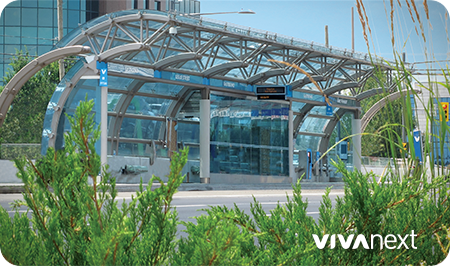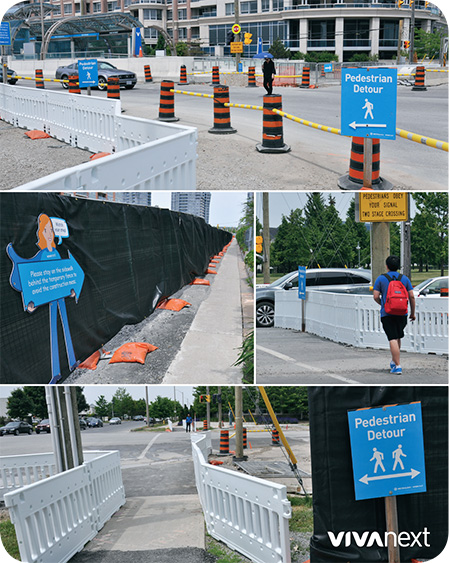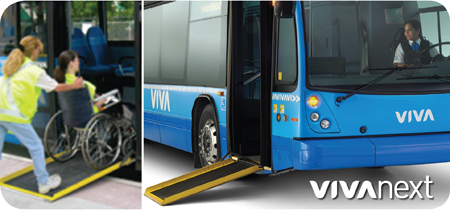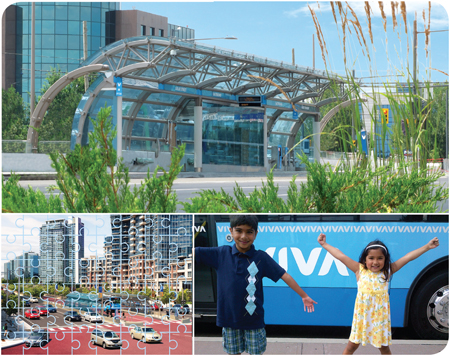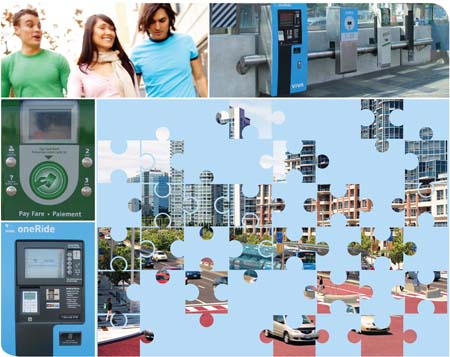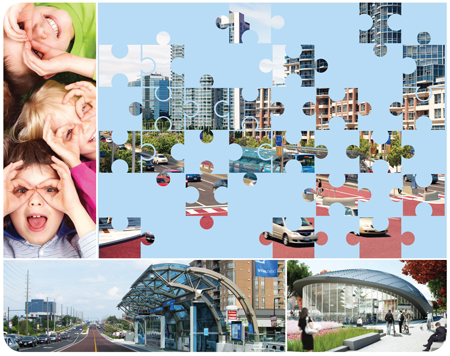If you’ve been travelling along Davis Drive recently, you’ll notice an exciting development taking shape on the vivaNext rapidway construction project: the installation of the first of three vivastations is being installed at the intersection of Parkside and Longford!
Here’s a quick overview of the vivastations, and how they’ll be installed.
Similar to the vivastations on Highway 7, the vivastations along Davis are going to be aesthetically pleasing and very functional. The curved Viva blue glass that makes up the canopy is surprisingly rugged – this glass is curved, tempered and laminated for strength, which prevents it from breaking into sharp pieces if it is cracked or broken. Reliability was our first priority in sourcing the manufacturer: our glass panels are actually being made by the company that makes nearly half of the world’s windshield glass.
Although the canopy is made up of nearly 100 individual panes of glass, each will be connected to its neighbour by small fasteners, referred to as “spiders” – so visually, the glass will look like it’s all one piece.
Supporting the glass underneath is a three-piece structure made of Canadian-fabricated steel, constructed just outside of Paris, Ontario. With durability in mind, the steel will be finished with a high-quality automotive-grade paint to minimize long-term maintenance costs.
Before the station components are delivered, a concrete platform is poured and set, and the connections built into the platform are prepared. Then the canopy’s three steel structural sections are brought in on a wide-load tractor trailer [it’s quite the sight to see them delivered!]. When installed they’re lifted into place. It takes about a week to align the sections perfectly and do some other prep work, in advance of the glass being delivered and installed. Lessons learned from Highway 7 have helped us find ways to modify the work to make the canopies easier and more efficient to install.
Because minimizing traffic impacts as much as we can is so important, our team has focused on finding strategies to install these huge canopies in a very small space with minimal lane closures.
Beyond providing rapid transit users with a comfortable and convenient experience, our vivastations are going to add a unique look and feel to Davis Drive which helps set the stage for future development. We look forward to celebrating this and other milestones as the work progresses!

